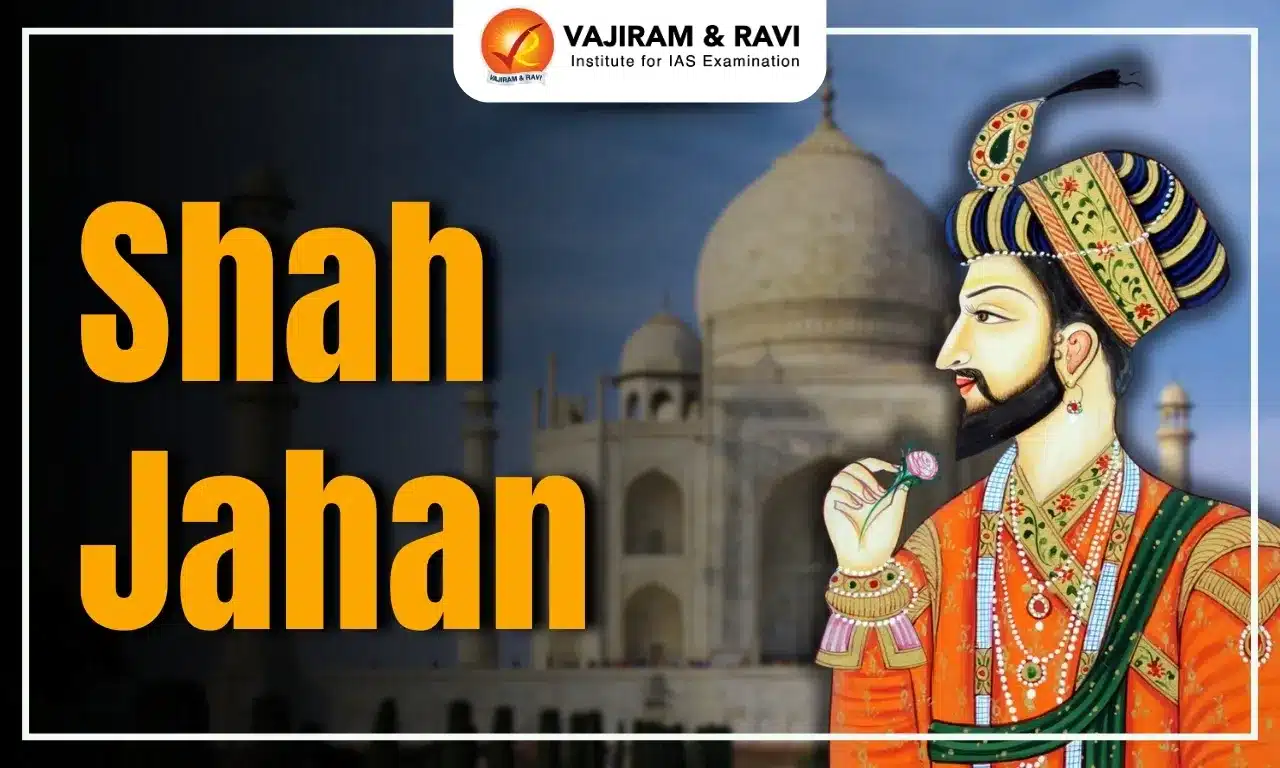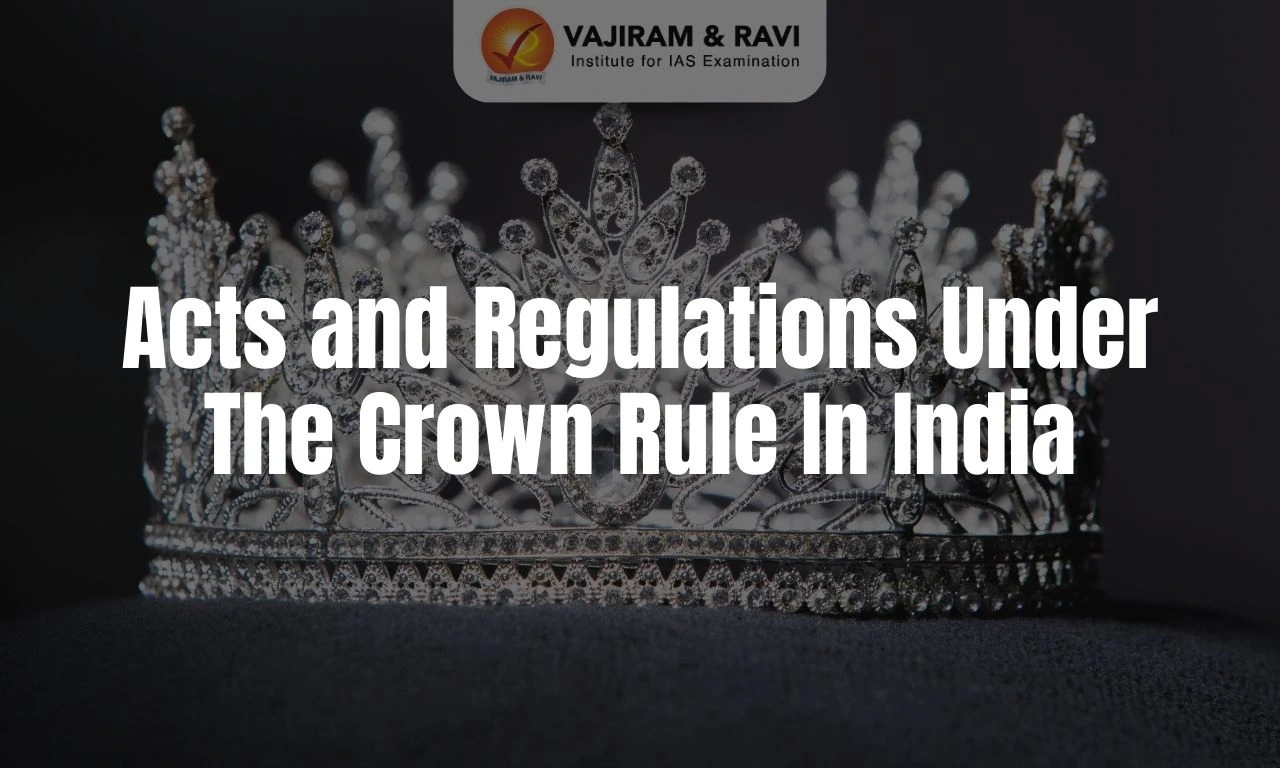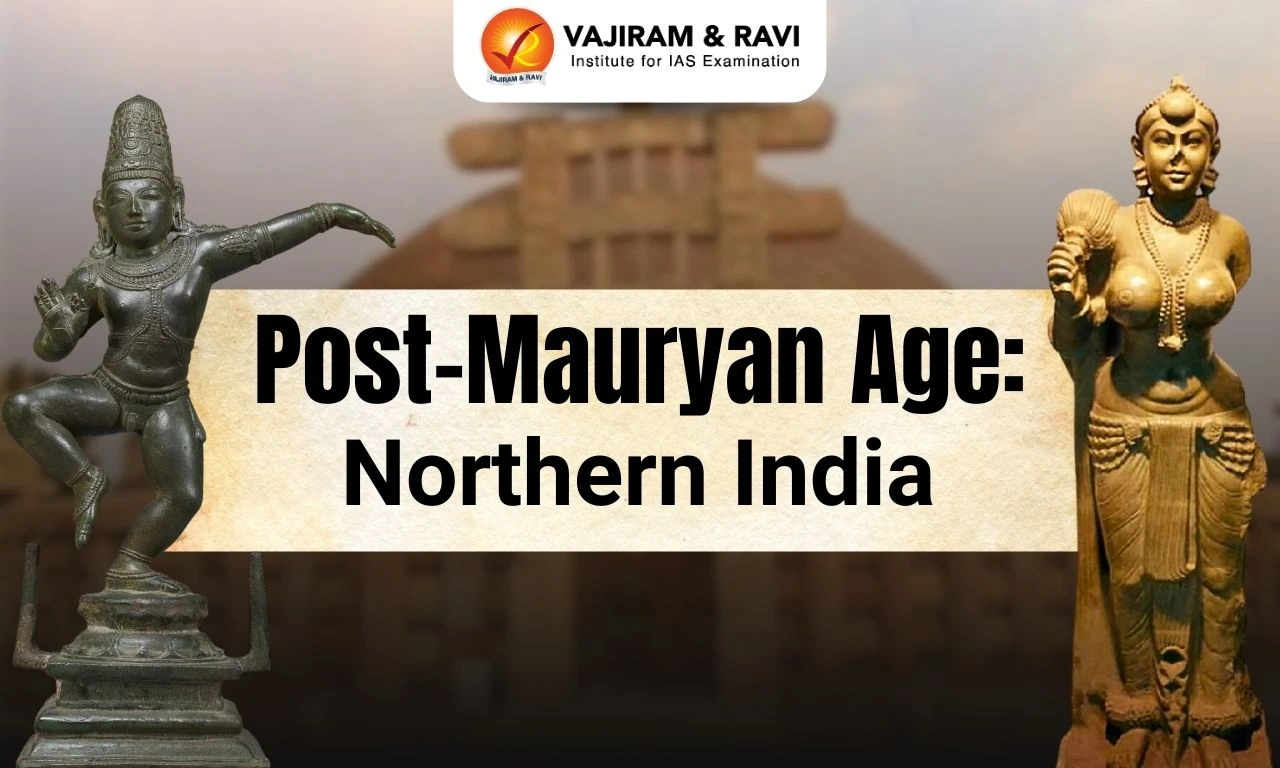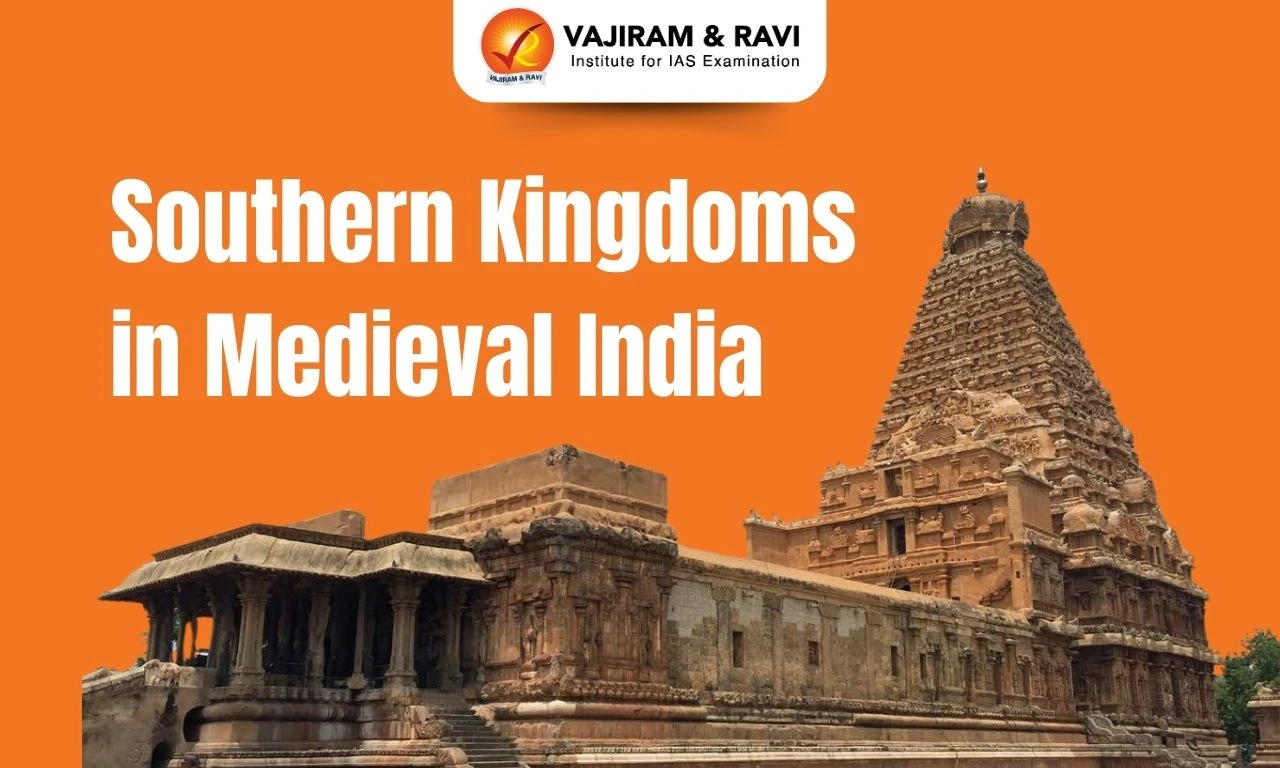Shah Jahan, the fifth Mughal emperor, is renowned for his military achievements, architectural brilliance, and administrative reforms. His reign, from 1628 to 1658, saw the Mughal Empire reach its territorial peak, with notable campaigns in the Deccan and Kandahar. He also oversaw key reforms in the Mansabdari system, administrative units, and charitable grant management.
Shah Jahan's legacy includes the construction of iconic monuments like the Taj Mahal and Red Fort. Despite his cultural and architectural patronage, his extravagant spending and military campaigns strained the empire's finances, contributing to the challenges faced by his successors, including a turbulent war of succession.
About Shah Jahan
Shah Jahan was the fifth Mughal emperor of India from 1628 to 1658. He was born on January 5, 1592, in Lahore and died on January 22, 1666, in Agra. He was the third son of Mughal Emperor Jahangir and Rajput Princess Manmati (Jagat Gosain).
- As Prince Khurram, he joined the influential Nur Jahan clique during Jahangir's reign. In 1622, Khurram rebelled against Jahangir but was unsuccessful in gaining the succession. He later reconciled with Jahangir.
- Following Jahangir's death in 1627, Aṣaf Khan, Nur Jahan's brother, supported Shah Jahan in establishing himself as emperor in Agra in February 1628. After his ascension to the throne, he adopted the prestigious title 'Shah Jahan Bahadur. ' The name Shah Jahan comes from the Persian word that means "King of the World."
Shah Jahan Architecture
Shah Jahan's reign is renowned for its monumental contributions to Mughal architecture, which reached its zenith during his rule. He commissioned a series of iconic structures that beautifully embodied the refinement of the Mughal aesthetic, characterized by a seamless fusion of Persian and Indian architectural styles.
- Architectural Apex of Mughal Empire: The Mughal Empire’s architectural brilliance peaked during the reign of Shah Jahan. In 1631, Shah Jahan began constructing the Taj Mahal in honour of his wife, Mumtaz Mahal (Arjumand Bano Begum), with the project being completed in 1648.
- The chief architects behind the Taj Mahal were Ustad Isa and Isa Muhammad Effendi, while the dome’s design was crafted by Ismail Khan.
- He also constructed the renowned Shalimar Bagh in Lahore.
- Mosque Construction: Shah Jahan’s era saw a significant surge in mosque construction, with some remarkable projects being:
- Moti Masjid in Agra is made entirely from white marble.
- Sheesh Mahal and Mussaman Burj in Agra.
- Jama Masjid in Delhi was built using red sandstone.
- Fort-Building: Shah Jahan’s reign also marked the height of fort-building, most notably the Red Fort in Delhi, which featured prominent structures like the Rang Mahal, Diwan-i-Aam, and Diwan-i-Khas.
- The famous Peacock Throne, housed in the Diwan-i-Khas (Hall of Private Audiences or Ministers’ Room) in Delhi's Red Fort, was built for Shah Jahan.
- Establishment of Shahjahanabad: Shah Jahan established Shahjahanabad, now known as Old Delhi, as the new capital of the Mughal Empire.
Shah Jahan Literary Works
Inayat Khan authored Shah Jahan Nama, a detailed but unillustrated chronicle of Shah Jahan’s reign. Abdul Hameed Lahori, the court historian, wrote Badshah Nama, an illustrated collection documenting the official history of Shah Jahan’s rule.
Shah Jahan Administration
Shah Jahan's administration was marked by significant reforms in various aspects, including changes to the Mansabdari system due to the Jagirdari crisis and land shortages. His reign restructured administrative units, strengthened oversight of charitable grants, and introduced new court etiquettes, streamlining governance and maintaining order.
- Mansabdari System: Under Shah Jahan, a reform in the Mansabdari system occurred due to the Jagirdari crisis and land shortages. The number of mansabdars increased, but they were now paid monthly.
- If a mansabdar did not receive a full 12-month salary, they could reduce the number of sawars without affecting their rank. If six months' salary was unpaid, a larger reduction in sawars was allowed, though the mansabdar’s rank and classification remained intact.
- Role of Sadr-us Sudur: He was the head of the ecclesiastical department, primarily responsible for upholding the laws of Shariat. He was also tasked with managing the distribution of charitable donations, both in cash (wazifa) and land grants (suyurghal, inam, madad-i ma’ash).
- Under Shah Jahan, the Sadr’s primary responsibility became overseeing the assignment and management of allowances and charitable grants.
- The Sadr scrutinized applications for new or renewed grants and presented them to the Emperor for approval.
- He also ensured that the charitable funds and land grants were distributed to the rightful individuals and used appropriately.
- Alms distribution was also conducted through the Sadr’s office.
- Administrative Units: Under Shah Jahan, a new administrative unit called chakla emerged, which was a cluster of Parganas. The sarkar was an established administrative division, consisting of multiple parganas and further subdivided into mahals or mauzas (villages).
- The Sarkar had two key officials:
- Faujdar: The executive head of the Sarkar. His role was to maintain law and order, suppress rebellions, and safeguard the lives and property of the people. The faujdar's jurisdiction could vary, sometimes covering multiple sarkars or chaklas, depending on the needs of the region.
- Amalguzar: The amalguzar was responsible for the collection of revenue at the Sarkar level.
- The Sarkar had two key officials:
- Reform in Court Etiquette: The practice of Sijda (full prostration) as the highest form of submission was replaced by Chahar Taslim (a gesture of salutation repeated four times) and Zaminbos (kissing the earth).
Shah Jahan Military Campaign
Shah Jahan is noted for his military prowess and aggressive expansionist policies. During his reign, the Mughal Empire reached its territorial zenith, primarily through successful military campaigns.
- Deccan Campaigns: Between 1630 and 1636, Shah Jahan led successful campaigns against the Deccan sultanates. His Deccan policy proved more successful. He defeated and annexed Ahmadnagar. Both Bijapur and Golkonda made a treaty with the emperor.
- Shah Jahan established four Mughal provinces in the Deccan: Khandesh, Berar, Telangana, and Daulatabad. They were placed under the command of his son Aurangzeb.
- Kandahar Campaign: Between 1639 and 1647, Shah Jahan launched a lengthy campaign on the northwest frontier to reclaim Kandahar and other ancestral lands.
- In 1646, Mughal forces occupied Badakhshan and Balkh.
- However, Balkh was relinquished in 1647, and subsequent attempts to reconquer it failed. In 1649, the Persians reconquered Kandahar.
- Shah Jahan realised the futility of his ambition and gave up fighting.
- Sikh Rebellion: The Sikhs rebelled under Guru Hargobind, and in response, Shah Jahan ordered their destruction. Guru Hargobind defeated the Mughal army at the Battles of Amritsar, Kartarpur, Rohilla, and Lahira.
- War with Portuguese: The Portuguese controlled Goa under their viceroy and had a main settlement in Hugli, Bengal. Shah Jahan ordered the Mughal Governor of Bengal to expel them from Hugli. Around 200 Portuguese held about 600 Indian slaves there, forcing many into Christianity.
- Additionally, Portuguese gunners from Goa had supported Bijapur's forces against the Mughals. Despite a strong defence, the Portuguese were quickly defeated.
Shah Jahan Religious Policy
During Shahjahan’s reign, court ceremonial breathed more of the Islamic spirit because of his attachment to Islam. Islamic festivals were celebrated with more vigor. Festivals like Eid, Shab-e-Barat, Rajab, Muharram, and Rabi-ul-Awwal were celebrated elaborately, with money distributed to the ulema and sufis. Shah Jahan appointed Mir-i-Haj to oversee the pilgrimage to Mecca.
Shah Jahan Relations with European Traders
Initially, the Portuguese had trading privileges in Bengal. However, their exploitative practices, such as heavy taxation and participation in the slave trade, led to increasing friction with the Mughal Empire. In response to these tensions, Shah Jahan launched a military campaign in 1641, capturing the Portuguese stronghold in Hugli.
- While conflict with the Portuguese escalated, the Dutch and English East India Companies took advantage of the situation to expand their trade networks.
- They established key trading centres in important cities like Surat, Agra, and Hugli, strengthening their presence in India.
Shah Jahan Cultural Patronage
Shah Jahan was celebrated as a great patron of Persian poetry, as noted by contemporary poet Ali Quli Salem. His reign marked the full blossoming of Persian literary culture in India. Abu Talib Kalim of Hamadan succeeded Qudsi as the court poet and authored several works, including an epic poem, Padshahnama, detailing Shah Jahan’s accomplishments.
The most prominent Persian poet of this period was Mirza Muhammad Ali Saib of Tabriz, who developed a new style of Persian poetry. Upon returning to Isfahan, he referred to India as a "second paradise," acknowledging the influence of Indian culture on his work.
Shah Jahan War of Succession
The Mughal War of Succession during Shah Jahan's reign was a power struggle among his four sons: Dara Shikoh, Shah Shuja, Aurangzeb, and Murad Bakhsh. Shah Jahan favored Dara Shikoh as his successor, but the other sons opposed this. Shah Shuja declared himself king of Bengal but was defeated by Dara’s forces.
- Meanwhile, Aurangzeb and Murad allied and defeated Dara at the Battle of Samugarh in 1658. After this, Aurangzeb imprisoned Shah Jahan.
- Aurangzeb then turned on Murad, having him killed, while Shuja fled and was murdered. Dara was captured and executed in 1659, leaving Aurangzeb as the sole ruler of the Mughal Empire.
Shah Jahan Reign Evaluation
Shah Jahan’s reign is often regarded as a period of grandeur, highlighted by remarkable achievements in art and architecture, making it a defining era of the Mughal Empire’s "Golden Age”. His leadership brought stability and economic growth, fostering trade and cultural interactions that greatly enriched the empire.
- However, his extravagant spending on grand architectural projects and expensive military ventures put a strain on the empire's financial resources, setting the stage for difficulties that emerged under his successors.
Shah Jahan UPSC PYQs
Q1: Who among the following Mughal Emperors shifted emphasis from illustrated manuscripts to album and individual portraits? (UPSC Prelims 2019)
- Humayun
- Akbar
- Jahangir
- Shah Jahan
Ans: (c)
Last updated on December, 2025
→ Check out the latest UPSC Syllabus 2026 here.
→ Join Vajiram & Ravi’s Interview Guidance Programme for expert help to crack your final UPSC stage.
→ UPSC Mains Result 2025 is now out.
→ UPSC Notification 2026 is scheduled to be released on January 14, 2026.
→ UPSC Calendar 2026 is released on 15th May, 2025.
→ The UPSC Vacancy 2025 were released 1129, out of which 979 were for UPSC CSE and remaining 150 are for UPSC IFoS.
→ UPSC Prelims 2026 will be conducted on 24th May, 2026 & UPSC Mains 2026 will be conducted on 21st August 2026.
→ The UPSC Selection Process is of 3 stages-Prelims, Mains and Interview.
→ UPSC Result 2024 is released with latest UPSC Marksheet 2024. Check Now!
→ UPSC Prelims Result 2025 is out now for the CSE held on 25 May 2025.
→ UPSC Toppers List 2024 is released now. Shakti Dubey is UPSC AIR 1 2024 Topper.
→ UPSC Prelims Question Paper 2025 and Unofficial Prelims Answer Key 2025 are available now.
→ UPSC Mains Question Paper 2025 is out for Essay, GS 1, 2, 3 & GS 4.
→ UPSC Mains Indian Language Question Paper 2025 is now out.
→ UPSC Mains Optional Question Paper 2025 is now out.
→ Also check Best IAS Coaching in Delhi
Shah Jahan FAQs
Q1. Who was Shah Jahan?+
Q2. What is the most famous architectural masterpiece associated with Shah Jahan?+
Q3. Who was the most prominent Persian poet during Shah Jahan's reign?+
Q4. Who became the next Mughal emperor after Shah Jahan?+
Q5. What led to the decline of Shah Jahan’s reign?+

















